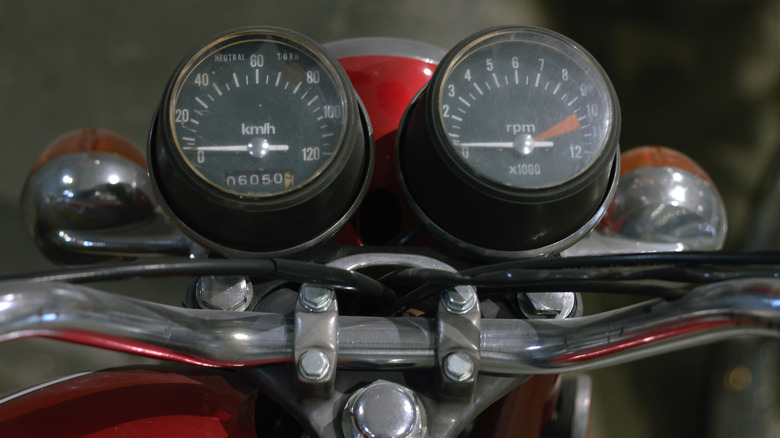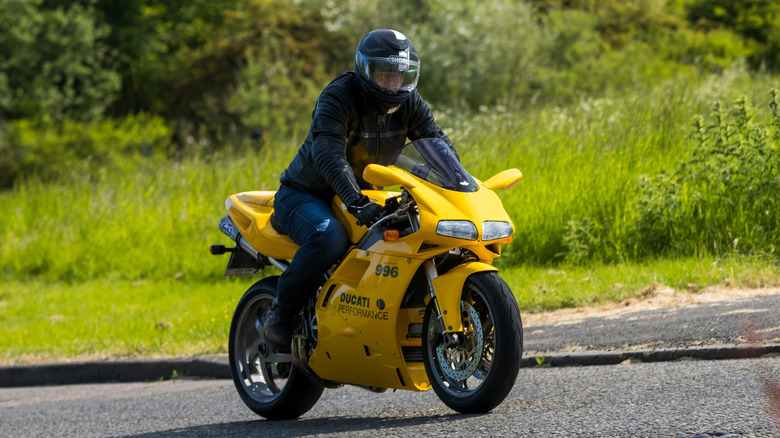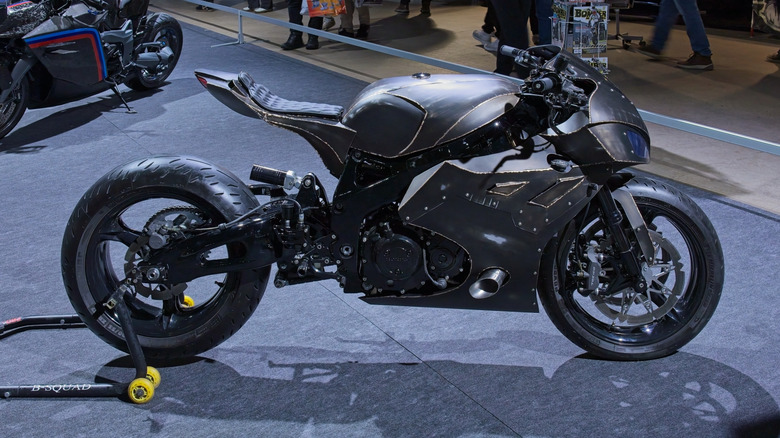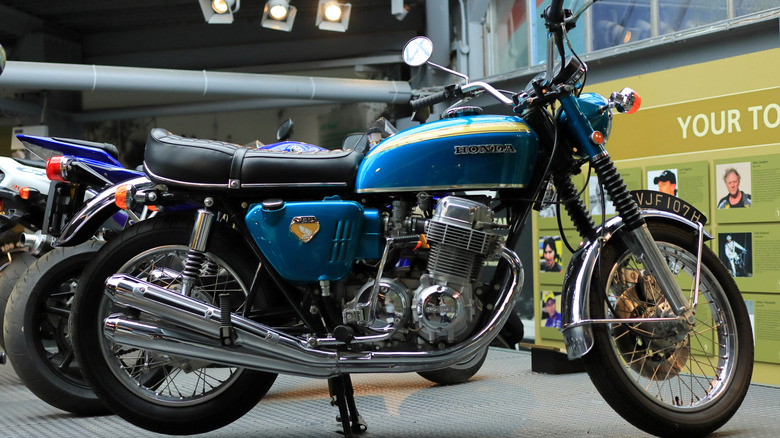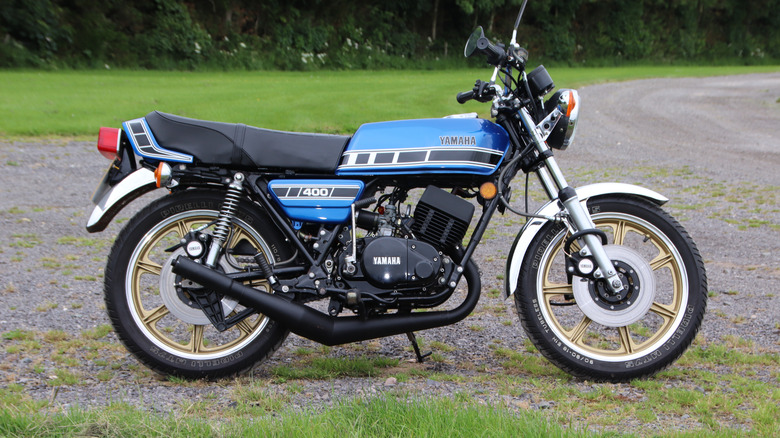5 Classic Motorcycles Worth Importing To The US
Some of the best bikes ever made never officially made it to the U.S. market. Tight emissions and safety laws from authorities like the EPA and DOT kept some true classics locked to Europe or Japan. But now, thanks to the 25-year rule, there's a clear legal path to bring these machines stateside. That means if you want something iconic and seriously different from the usual Harleys and Hondas at your local bike night, these bikes are worth tracking down.
These aren't showpieces for a garage. They're the kind of bikes that deliver raw feedback, authentic character, and a pure riding experience. Every motorcycle on this list was never officially sold in the U.S. or was severely limited in number, and is 25 years or older, so you can import it without the authorities breathing down your neck. Apart from that, some of them represent a high point in design, performance, or cultural impact for their brand, whether by being featured in popular movies or by doing something never done before. Here's what makes them worth the effort to import.
Ducati 996
The Ducati 996 and its higher-spec sibling, the 996 SPS, represent a peak era in Ducati's superbike legacy. The standard 996, introduced as the successor to the 916, featured the now-iconic 996cc Desmoquattro L-twin engine with liquid cooling, four-valve heads, and electronic fuel injection.
What made the 996 special wasn't just its spec sheet. It was the way it felt to ride. Purely mechanical, aggressively analog, and loaded with character, the 996 responded best when ridden hard. There were no rider modes, no electronics; just a taut chassis, simple suspension, and the unmistakable soundtrack of a big V-twin barking through SilMotos.
The 996 SPS took that base and turned it up. Originally built for homologation, the SPS used the same 996cc capacity but featured twin injectors per cylinder and lighter internals like titanium rods. With 123 horsepower at 9,500 rpm, Öhlins suspension, and Marchesini wheels, the SPS was as close as many would get to a factory race bike for the street. Today, both models are icons (the 996 even featured in "The Matrix Reloaded" as the motorcycle Carrie-Ann Moss rode), but the SPS, with its limited numbers and track-focused upgrades, is the collector's grail. It was the last of the Desmoquattros before the Testastretta era began.
Honda CBR900RR
Launched in 1992, the original Honda CBR900RR Fireblade wasn't the most powerful bike of its era, but it was the lightest. At just 185 kilograms, it undercut rivals by a wide margin and delivered razor-sharp handling that impressed both riders and reviewers. Engineered by Tadao Baba, the Fireblade prioritized weight savings over raw power. Its compact 893cc inline-four produced 128 bhp, but its agility gave it the edge on real-world roads and tracks. The 16-inch front wheel made for responsive steering, though it limited modern tire choices. Still, many purists appreciate the original geometry for its distinctive feel.
The second-gen model (SC33), released in 1996, bumped displacement to 918cc and shaved off more weight. With 126 bhp and 68 ft-lb of torque, it remained a street weapon, capable of 160 mph. Owners praise its bulletproof reliability, with many still running strong with six-figure mileage. Build quality was peak Honda minimalist but made to last.
The Fireblade's smooth throttle response and comfortable ergos made it both a canyon carver and a daily ride. It's still praised for its styling, especially the 'Tiger Stripe' graphics and fox-eye headlights, resulting in one of the coolest-looking motorcycles Honda ever made. Original models are now sought after by collectors and nostalgic riders alike.
Honda CB750
The Honda CB750 (not to be confused with the CR750) changed motorcycling forever when it landed in 1969. No other production bike at the time offered a four-cylinder engine, a front disc brake, and electric start in one package. Honda's 736cc inline-four produced 67 horsepower, was fast, and, unlike the kick-started, oil-leaking competition, it started every time with the push of a button.
What really set the CB750 apart was its build quality and usability. It was a lot easier to ride than the Triumphs and BSAs of the time. The overhead cam engine, solid five-speed gearbox, and hydraulic disc brake made it feel like a machine from the future. And it looked the part too: four exhaust pipes and classic Japanese styling made it an instant classic.
Despite its impact, early CB750s didn't explode in value, but interest is growing. Early "sandcast" models (the first batch from 1969) now command premium prices, while clean die-cast versions from the early '70s are still accessible. As a modern classic, the CB750 remains rideable, collectible, and significant. It's not the rarest, but it might be the most important Japanese bike of the 20th century. For riders or collectors, it's still one of the best ways to own a piece of motorcycling history.
Suzuki GS1000
Released in 1978, the GS1000 took the foundation laid by the GS750 and pushed it into liter-bike territory with purpose and poise. It was designed by engineer Hisashi Morikawa, who built it to handle real-world stress, not just to make horsepower, but to do it reliably on the street and the track. The 997cc air-cooled inline-four made a claimed 90 horsepower at 8,500 rpm and was paired with a five-speed transmission. It might not sound impressive by today's standards, but the GS1000's strength was in its balance: a rock-solid chassis and user-friendly suspension that didn't punish riders for pushing it hard.
The frame was thin-wall tubular steel, light at just 38 pounds but rigid where it mattered. The bike used air-adjustable Kayaba forks and twin shocks out back, with tuning options that were advanced for the time. It was quick, too, with less than 12 second quarter-miles.
Suzuki also made clever weight-saving changes, like switching to "pork-chop" crank counterweights and ditching the kickstarter. That meant the GS1000 was actually narrower and lighter than the GS750 in key areas. On track, it dominated, winning Daytona and the Suzuka 8-Hour, and forming the foundation for AMA Superbike success.
Yamaha RD400
The Yamaha RD400 landed in 1976 and instantly earned its place in motorcycle history as the two-wheeled equivalent of punk music: aggressive, stripped-back, and perfect for anyone ready to rebel against the status quo. Often mistaken as just an RD350 with a bored-out engine, the RD400 was actually a ground-up redesign. Yamaha increased the stroke (not the bore), requiring new crankcases and a full retooling at the factory. The 398cc, air-cooled, two-stroke twin delivered 40 horsepower and could push 106 mph, a wild number for the time. A rubber-mounted engine was added to tame vibration, but its wheelie-prone nature stuck around, and that only made it more fun.
While the RD400 was fast and light (160 kilograms), its brakes struggled to keep up with the pace. Engine wear, crank seal issues, and sketchy paintwork were all common complaints. But it didn't matter. The bike had attitude: coffin-shaped tank and optional cast wheels (standard from '77). The RD400 ran until 1979, ending with the Daytona Special, a final version that oddly never saw an official U.K. release. By then, Yamaha was preparing to drop the legendary RD350LC, but the RD400 had already laid the groundwork. It was a bike for the streets, for the kids, and for anyone who thought the world moved too slow.
